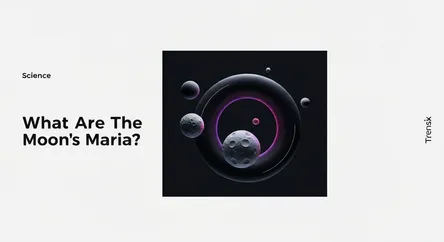Science
What Are The Moon's Maria?

Discover the lunar maria, the vast, dark 'seas' on the Moon. Learn how these ancient volcanic plains were formed and what they reveal about lunar history.
What is it?
The lunar maria, Latin for "seas," are the large, dark plains on the Moon visible from Earth. Early astronomers mistook them for actual oceans, hence the name. In reality, these are vast, smooth plains of solidified basaltic lava. They formed billions of years ago when massive asteroid impacts created deep basins that later filled with molten rock flowing from the Moon's interior. This lava cooled to form the dark surfaces we see today, which contrast sharply with the brighter, heavily cratered lunar highlands. The most famous example is the Mare Tranquillitatis, or "Sea of Tranquility," the landing site of Apollo 11.
Why is it trending?
Interest in lunar maria is surging with the new era of space exploration, including NASA's Artemis program and missions from private companies. The relatively smooth, flat terrain of the maria makes them prime candidates for future landing sites and potential lunar bases. Scientists are also re-examining data and samples from these regions to better understand the Moon's volcanic past and internal structure. The unique composition of maria basalt contains valuable resources, such as ilmenite, which could be mined for oxygen and titanium.
How does it affect people?
The study of lunar maria is fundamental to our understanding of planetary evolution and the history of our solar system. For humanity's future, these regions are of immense strategic importance. They are the most practical locations for establishing sustainable human outposts. The ability to extract resources like oxygen and water ice from nearby shadowed craters would reduce our reliance on Earth for supplies, making long-term lunar habitation and further space exploration, like missions to Mars, a more achievable reality.